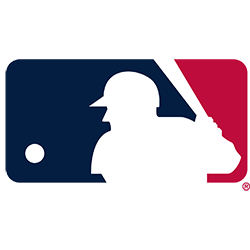 The next step in the labor negotiations between players and MLB is now in place, as MLB officially locked out players after the last Collective Bargaining Agreement expired at midnight. What are they fighting over?
The next step in the labor negotiations between players and MLB is now in place, as MLB officially locked out players after the last Collective Bargaining Agreement expired at midnight. What are they fighting over?
This is the first MLB lockout since 1990, and the first labor stoppage since 1994, when players went on strike. The 1994-1995 strike was especially severe, ending with the cancellation of the World Series and postponing the launch of the 1995 season. No one wants to see a repeat of the 1994-1995 labor problems; it took years for the sport to recover.
There are a host of challenges facing the sport these days, as the very financial structure of the game is transitioning to a new era. Most of us are so close to the sport we can’t see how much change there’s been in baseball in the last decade, and many in the sport just can’t distance themselves enough to see the big picture. The old business model: develop players over several years, require six MLB seasons under team control, defer big money until the end of a player’s career, and rely on ever-increasing revenues from regional sports networks to fund the works. MLB baseball teams, by and large, were in the business of playing baseball.
With media consumption rapidly shifting to streaming–representing a huge challenge to MLB’s economic reliance on a struggling regional sports network (RSN) industry–the nature of how MLB monetizes viewers is rapidly changing, one that will likely require taking direct control of streaming. How MLB is marketed in a rapidly changing culture is also an issue: baseball fans skew old and white, and the sport has been slow to promote young talent in a hip-hop, TikTok age. Another change in the revenue front: more and more teams are leveraging ballpark investments into larger real-estate ventures, creating new revenue streams that players can’t touch. Of course it benefit the Ricketts family to develop Wrigleyville and perhaps the corporate entity that is Chicago Cubs, but the way MLB’s revenues are structured, the players are not a beneficiary.
So while MLB teams are in transition as the world changes, the players want to see more money upfront and not wait six–or, in the case of Kris Bryant, basically seven–years before any big money is possible. (To say that the Cubs might have gone too far in manipulating Bryant’s service time, thus causing outrage among players and the union, is an understatement. Yes, the Cubs played by the rules in place, but the situation showed the rules need to be changed.)
In announcing the lockout, MLB Commissioner Rob Manfred argues that the players are rejecting the best labor agreement in pro sports, that teams are spending on talent than ever before, and that their proposal would eliminate service-time loopholes like Bryant’s. All true. The players union argues that MLB should prevent teams from tanking, that players are still tied to teams for too long until unfettered free agency, and that median and average salaries have steadily have dropped since the last CBA in 2016. Part of why salaries have declined is that the sport has gotten younger, with teams committing most of payroll to lower-paid talent, and the union wants to see more money flow to these players. All true.
We’re not going to get bogged down on the minutiae separating the two sides now. Interestingly, there are some issues where it appears the two sides are not far apart, like a revamped draft, requirements for free agency and revisions to service-time structures. Where they are apart, however, are on some core issues like the competitive balance tax and a minimum payroll. How far apart they really are is a matter of psychology and not of economics: you’re got a bunch of labor lawyers on the MLB side expressing gloom and doom, and you have representatives of the players saying a lockout wasn’t necessary. Some inside the industry describe these stances more as kabuki than a serious fissure, and at some point the players association needs to be acknowledged as a partner, not as adversary.
How this will affect the 2022 season isn’t a huge concern right now: we’re several months away from spring-training reporting dates. One reassuring fact is that it’s in no one’s best interest to postpone the coming season, coming after two COVID-impacted years that saw declines in revenues and new challenges in running a sport that still relies on live-event revenues. We’re not back to normalcy yet, and even if there was a labor agreement now there are still plenty of short-term challenges to the game, never mind the long-term challenges we outline here. We’re in the midst of tremendous change in the economics of pro sports, and the sooner both sides can come to an agreement, the sooner the discussions can begin on how to address these long-term challenges.
RELATED STORIES: MLB, players anticipate work stoppage Dec. 2; MLB streaming set for huge reset?; MLB Labor Agreement Goes Down to the Wire
